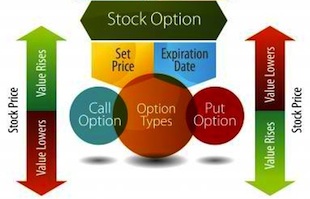 Unless one is a professional options trader, their options trading setups should include well-defined risk. I do not advise being naked options short, even net options short as in a ratio spread. Oh, and by the way, a covered write is exactly the same as being naked short puts, but that’s a lesson in itself.
Unless one is a professional options trader, their options trading setups should include well-defined risk. I do not advise being naked options short, even net options short as in a ratio spread. Oh, and by the way, a covered write is exactly the same as being naked short puts, but that’s a lesson in itself.
Part of my entire “simplify and demystify” working method of trading options is to always and at all times know exactly the most one can lose on any particular trade or strategy. In my instructions I always ask my mentees to tell me what is the maximum risk, what is/are the break even points and what is the maximum profit. If the maximum risk is undefinable then I teach that the trade is not worth doing.
Hey, on a quality of life basis if nothing else. Who needs a position that carries a risk, however unlikely, that could blow up your entire portfolio if it went wrong? Life’s way too short for that kind of worry, eh?
By way of this let me discuss a well-known strategy that aims to either capture dividend yield or generate short-term income. That being the cash covered short put.
I love dividends, by the way. I firmly believe that companies should pay out part of their profit to the people who take the risk of being shareholders. And, in this world of near zero interest rates there is that constant quest for yield.
Take a stock that pays a yield with which you are comfortable, but you would love to have that stock at a lower price giving an even higher dividend yield. Classic options trading theory says sell the out of the money put entirely secured by enough cash to buy the stock at the strike if assigned. That cash can be put in a (however low) interest-bearing asset such as T Bills and used to buy the stock if assigned. If not assigned then the short put expires worthless, short-term cash is generated and on to the next options trading cycle.
The problem with that strategy is there is insufficient downside protection. If you lock in a 5% dividend yield and the stock goes down 20% in a market crash you’re not too happy.
That’s why I suggest selling a credit vertical put spread as a safer alternative. That way, if assigned, you are long stock with a protective long put. You can wait for a rebound, sell an out of the money call and have a nice zero cost collar. And, if not assigned, you collect the credit from the put spread going out worthless. OK, not as much money as simply selling the put naked, but I’ll take that over an undefined downside risk any day.
Here’s a real life options trading example from Monday, May 6. Reynolds American (RAI) at its current price of 47.30 yields a nice 4.90%. However, let’s say I sell the June 46 – 42 put spread at .50. If assigned on the 46 put I now have a yield of 5.70% and I have capped my downside at 42. If not assigned, I collect the 50 cents and to the next cycle we go.
That’s the sort of investment strategy trading options that I prefer. A well-defined risk coupled with a known reward.
Randall Liss is the author of The Liss Report.
Any opinions expressed herein are solely those of the author, and do not in any way represent the views or opinions of any other person or entity.







